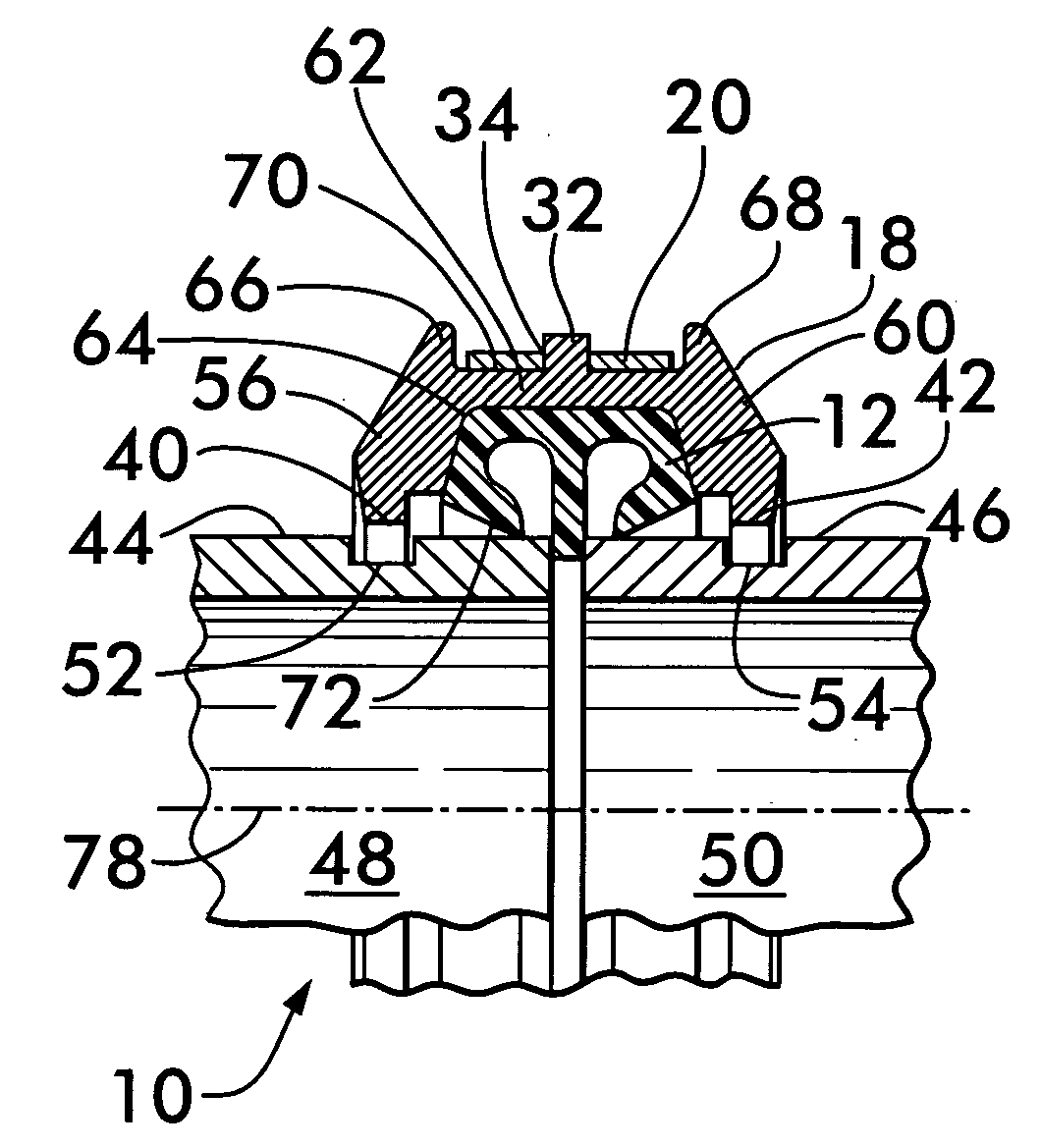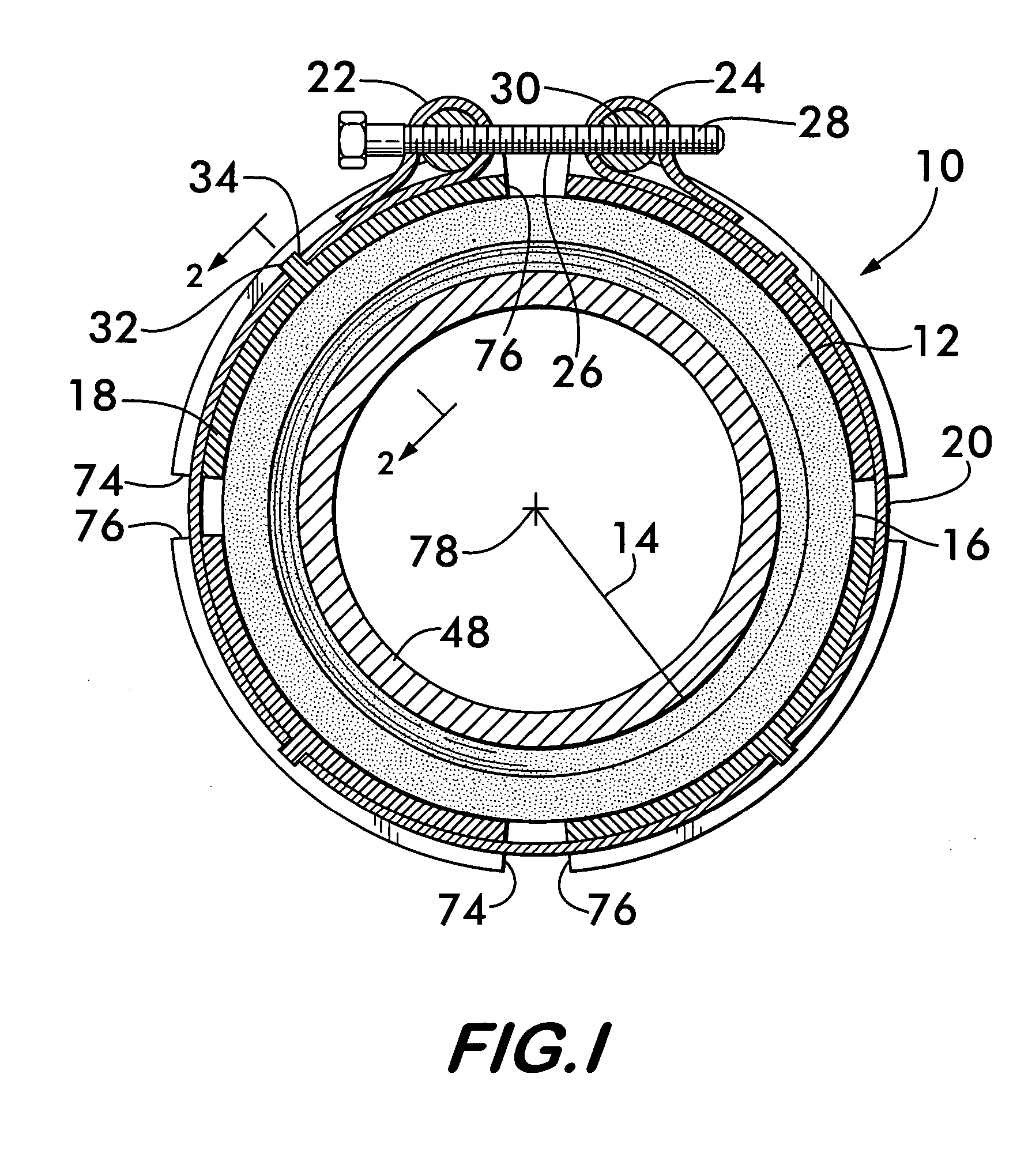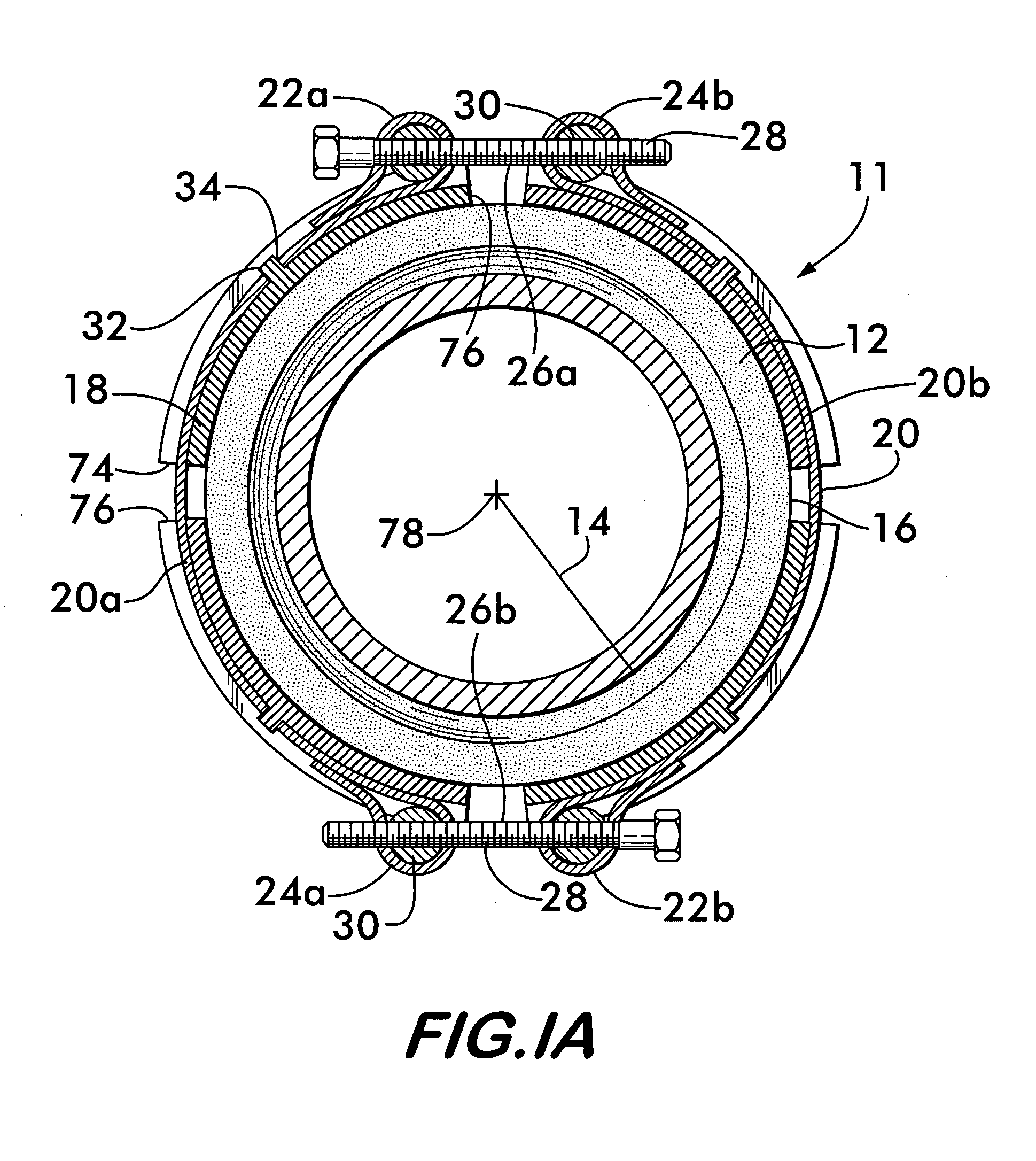Pipe coupling having compression band
a compression band and pipe coupling technology, applied in the field of couplings, can solve the problems of manual manipulation of the seal, tedious and time-consuming installation process of mechanical couplings,
- Summary
- Abstract
- Description
- Claims
- Application Information
AI Technical Summary
Benefits of technology
Problems solved by technology
Method used
Image
Examples
embodiment 11
[0025]FIG. 1A illustrates an alternate coupling embodiment 11 wherein compression band 20 is divided into a plurality of band portions, in this example, two portions, 20a and 20b. Each band portion has opposite ends 22a and 24a, and 22b and 24b respectively, which are positioned adjacent to one another so as to arrange the band portions in end to end relationship around the segments 18. The ends in facing relation, 22a and 24b, and 22b and 24a, are joined by respective tensioning members 26a (mounted between 22a and 24b) and 26b (mounted between 22b and 24a). Each tensioning member preferably also comprises a bolt 28, mounted on one end of a band portion (22a and 22b), the bolt engaging a threaded body 30 mounted on the adjacent end portion (24a, 24b). Tightening of the tensioning members applies tension to the band portions and forces the segments 18 radially inwardly against the sealing member 12. Compression band couplings having two or more band portions and the appropriate numb...
embodiment 80
[0032] While projecting arcuate surfaces engageable with grooved pipes are a preferred embodiment, the coupling according to the invention may also be used to join plain end pipe elements. Such an embodiment 80 is shown in FIG. 2B, wherein segments 18 have arcuate surfaces 40 and 42 that may comprise a tooth or teeth 82 and 84. The teeth, when present, face substantially radially inwardly to grip the outer surface of plain pipe elements and provide mechanical restraint to the joint when the tensioning member of the coupling is tightened and the segments are forced into engagement with the pipe elements. The teeth may extend substantially continuously around the segment as illustrated by teeth 82, or they may be a single tooth 84, or a plurality of single teeth 84 spaced apart at intervals from one another.
embodiment 79
[0033] In an alternate coupling embodiment 79, shown in FIGS. 3 and 3A, segments 18 have opposite end faces 86 and 88 that are angularly oriented with respect to the longitudinal axis 78 of the pipe elements. This angular orientation is best shown in FIGS. 7 and 7A. FIG. 7 shows an axial view of a single segment 18 from coupling 79 wherein end faces 86 and 88 are visible. FIG. 7A shows the segment 18 of FIG. 7 as it would appear looking inwardly toward axis 78 to render the relative orientation of both end faces 86 and 88 visible and thus emphasize the angular relation between the end faces and the axis 78. Note that the end faces on each segment have opposite slopes. Furthermore, as shown in FIGS. 3 and 3A, the end faces 86 and 88 on neighboring segments 18 are substantially parallel to one another. In this embodiment, the segments are sized so that the end faces 86 on each segment engage the end faces 88 on each neighboring segment upon tightening of the tensioning member and as t...
PUM
| Property | Measurement | Unit |
|---|---|---|
| inner diameter | aaaaa | aaaaa |
| tension | aaaaa | aaaaa |
| flexible | aaaaa | aaaaa |
Abstract
Description
Claims
Application Information
 Login to View More
Login to View More - R&D
- Intellectual Property
- Life Sciences
- Materials
- Tech Scout
- Unparalleled Data Quality
- Higher Quality Content
- 60% Fewer Hallucinations
Browse by: Latest US Patents, China's latest patents, Technical Efficacy Thesaurus, Application Domain, Technology Topic, Popular Technical Reports.
© 2025 PatSnap. All rights reserved.Legal|Privacy policy|Modern Slavery Act Transparency Statement|Sitemap|About US| Contact US: help@patsnap.com



